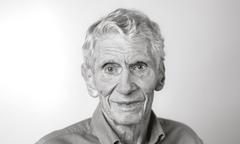URL: https://www.desy.de/news/news_search/index_eng.html
Breadcrumb Navigation
DESY News: In memoriam: Ken Holmes
News
News from the DESY research centre
In memoriam: Ken Holmes
On 2 November 2021, Ken Holmes, the founder of the European Molecular Biology Laboratory's Hamburg site on the DESY campus and one of the major pioneers in biology research with X-rays, passed away at the age of 86. The London-born physicist spent most of his career as a director at the Max Planck Institute for Medical Research in Heidelberg, regularly making his way northwards to Hamburg to work at the DESY and DORIS synchrotron lightsources. In the process, he helped establish the experimental procedures and techniques that have led to hundreds of thousands of biological structures being elucidated in the past half century.
In the 1960s, Holmes contributed considerably to imaging the molecular systems behind animal musculature. At the time, researchers were having trouble seeing how to use standard crystallography techniques to resolve the complex molecular machinery within animal muscle complexes. Having studied novel X-ray techniques while working at the Laboratory for Molecular Biology in Cambridge, Holmes thought that storage rings of electrons would generate the X-rays needed to solve the problem. In 1969, he presented the structure of an insect flight muscle, which he had determined through experiments at DESY’s original synchrotron.Having shown the capabilities of synchrotron radiation for biology, Holmes and his collaborator Gerd Rosenbaum constructed a special lab for structural biology at the then-new DORIS light source at DESY. The construction of this workspace coincided with the planning of the European Molecular Biology Laboratory, to which Holmes then appealed to have his new DESY lab added as one of its sites: EMBL Hamburg was born.
Holmes continued to perform research at DESY at the EMBL Hamburg site throughout his career, exactly as scientists from around the world began to come to Hamburg to do structural biology work at the synchrotron lightsources DESY, DORIS, and today at PETRA III. Since Holmes’ initial work, many other similar synchrotron storage ring light sources have opened worldwide, leading to major advancements in the mapping out of biomolecules. By the time Holmes retired in 1999, 15% of all known biomolecular structures had been determined on the DESY campus.
“In the development of experimental techniques that are essential to structural biology, Ken Holmes was a giant,” said Edgar Weckert, director for photon science at DESY. “Every user performing biology experiments at synchrotrons today builds on his rich legacy, and we are grateful for the mark he left on our campus by establishing EMBL Hamburg.”
Further reading:
EMBL Obituary




